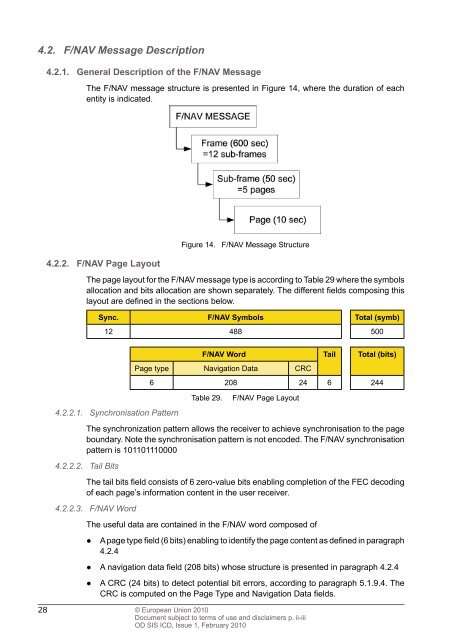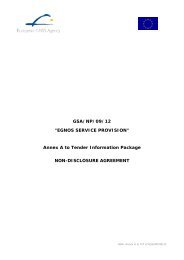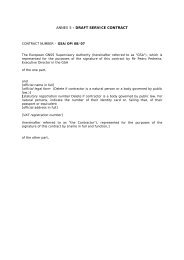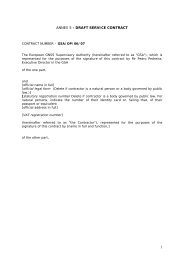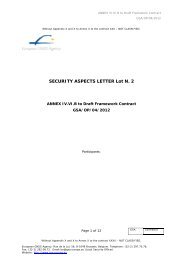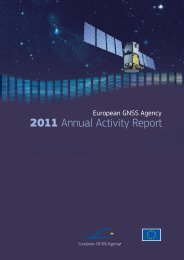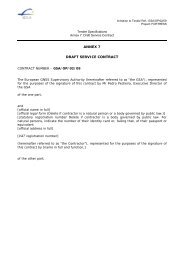Galileo OS SIS ICD.indd - GSA - Europa
Galileo OS SIS ICD.indd - GSA - Europa
Galileo OS SIS ICD.indd - GSA - Europa
Create successful ePaper yourself
Turn your PDF publications into a flip-book with our unique Google optimized e-Paper software.
4.2. F/NAV Message Description<br />
4.2.1. General Description of the F/NAV Message<br />
The F/NAV message structure is presented in Figure 14, where the duration of each<br />
entity is indicated.<br />
4.2.2. F/NAV Page Layout<br />
Figure 14. F/NAV Message Structure<br />
The page layout for the F/NAV message type is according to Table 29 where the symbols<br />
allocation and bits allocation are shown separately. The different fi elds composing this<br />
layout are defi ned in the sections below.<br />
Sync. F/NAV Symbols Total (symb)<br />
12 488 500<br />
4.2.2.1. Synchronisation Pattern<br />
F/NAV Word Tail Total (bits)<br />
Page type Navigation Data CRC<br />
6 208 24 6 244<br />
Table 29. F/NAV Page Layout<br />
The synchronization pattern allows the receiver to achieve synchronisation to the page<br />
boundary. Note the synchronisation pattern is not encoded. The F/NAV synchronisation<br />
pattern is 101101110000<br />
4.2.2.2. Tail Bits<br />
The tail bits fi eld consists of 6 zero-value bits enabling completion of the FEC decoding<br />
of each page’s information content in the user receiver.<br />
4.2.2.3. F/NAV Word<br />
The useful data are contained in the F/NAV word composed of<br />
● A page type fi eld (6 bits) enabling to identify the page content as defi ned in paragraph<br />
4.2.4<br />
● A navigation data fi eld (208 bits) whose structure is presented in paragraph 4.2.4<br />
● A CRC (24 bits) to detect potential bit errors, according to paragraph 5.1.9.4. The<br />
CRC is computed on the Page Type and Navigation Data fi elds.<br />
28 © European Union 2010<br />
Document subject to terms of use and disclaimers p. ii-iii<br />
OD <strong>SIS</strong> <strong>ICD</strong>, Issue 1, February 2010


